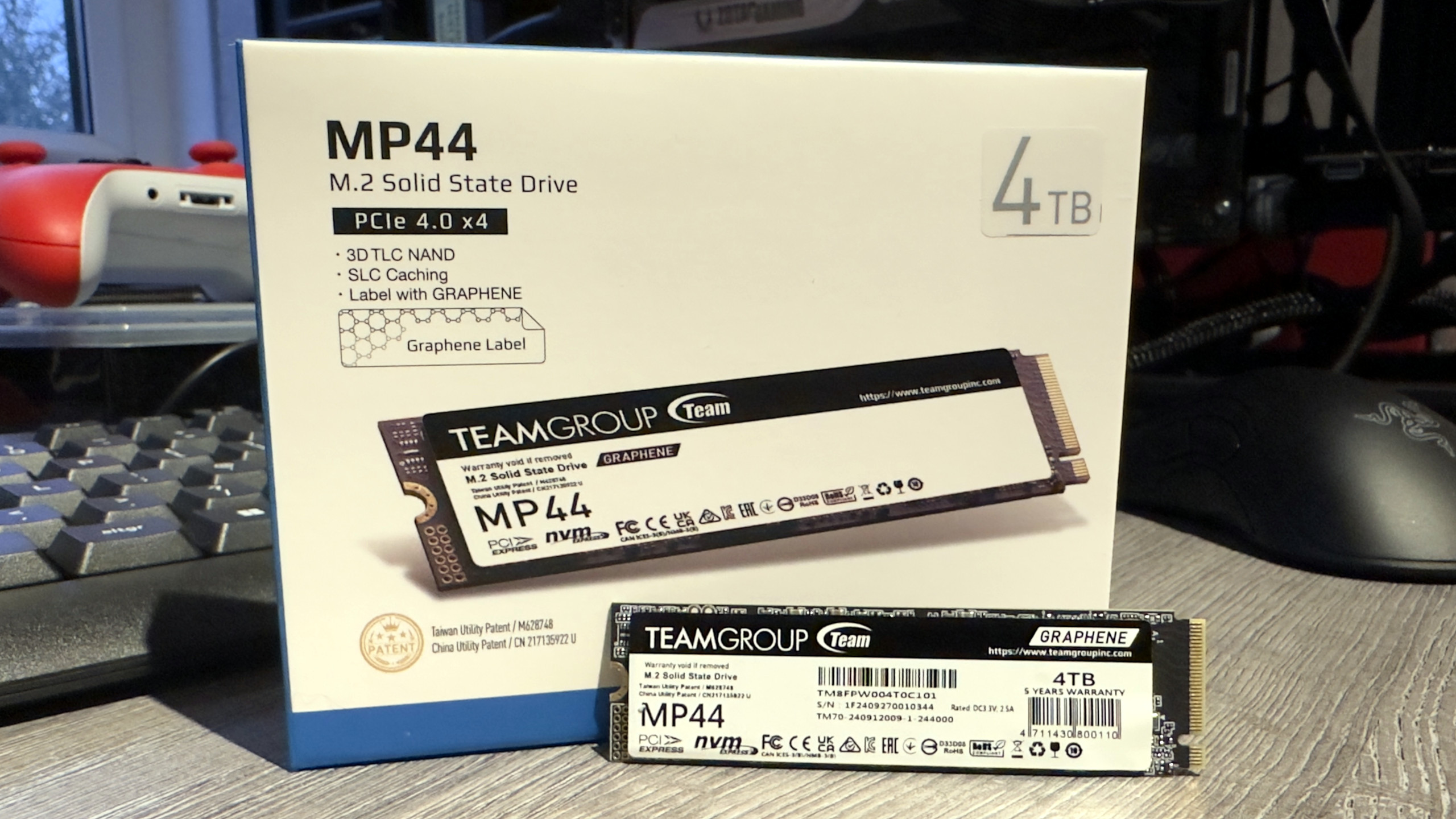Our Verdict
The Team Group MP44 is an excellent SSD, with bags of performance and capacity, in this 4 TB model. With a huge SLC cache, it can sustain data writes for a long time but it does need a decent cooling solution to stop it from thermally throttling.
For
- Big capacity
- Great performance
- Huge SLC cache
- Value for money
Against
- Low thermal limit
- Slow data rate once very full
PC Gamer's got your back
It wasn't that long ago when new gaming PCs shipped with a 256 GB SSD as the main drive and a 2 TB HDD to store all your games on. Now you can easily replace both with a single big solid-state drive. And in the case of this Team Group MP44, with 4 TB of capacity, you can do so without having to spend a small fortune.
That said, paying over $220 for an SSD is still a lot of money, but it works out at less than six cents per gigabyte. For a drive with performance claims of 7,400 and 6,900 MB/s sustained read/write, that's about as cheap as it currently gets. So you'd be forgiven for thinking that Team Group must be using poor-quality components to keep the price down.
The MP44 uses the same controller and NAND flash memory modules as those in the Lexar NM790, and nobody has ever accused that SSD of being cheaply made. It is simply a case that Team Group has sourced the best value parts on the market and delivered them all in a package that's free of frills and fancy features.
For example, there's no DRAM cache to help maintain sustained performance. Instead, like all such DRAM-less SSDs, it uses part of its capacity in a pseudo-SLC mode. NAND flash comes in various types (SLC, TLC, QLC, etc) and the YMTC 232-layer modules in the MP44 are TLC-based.
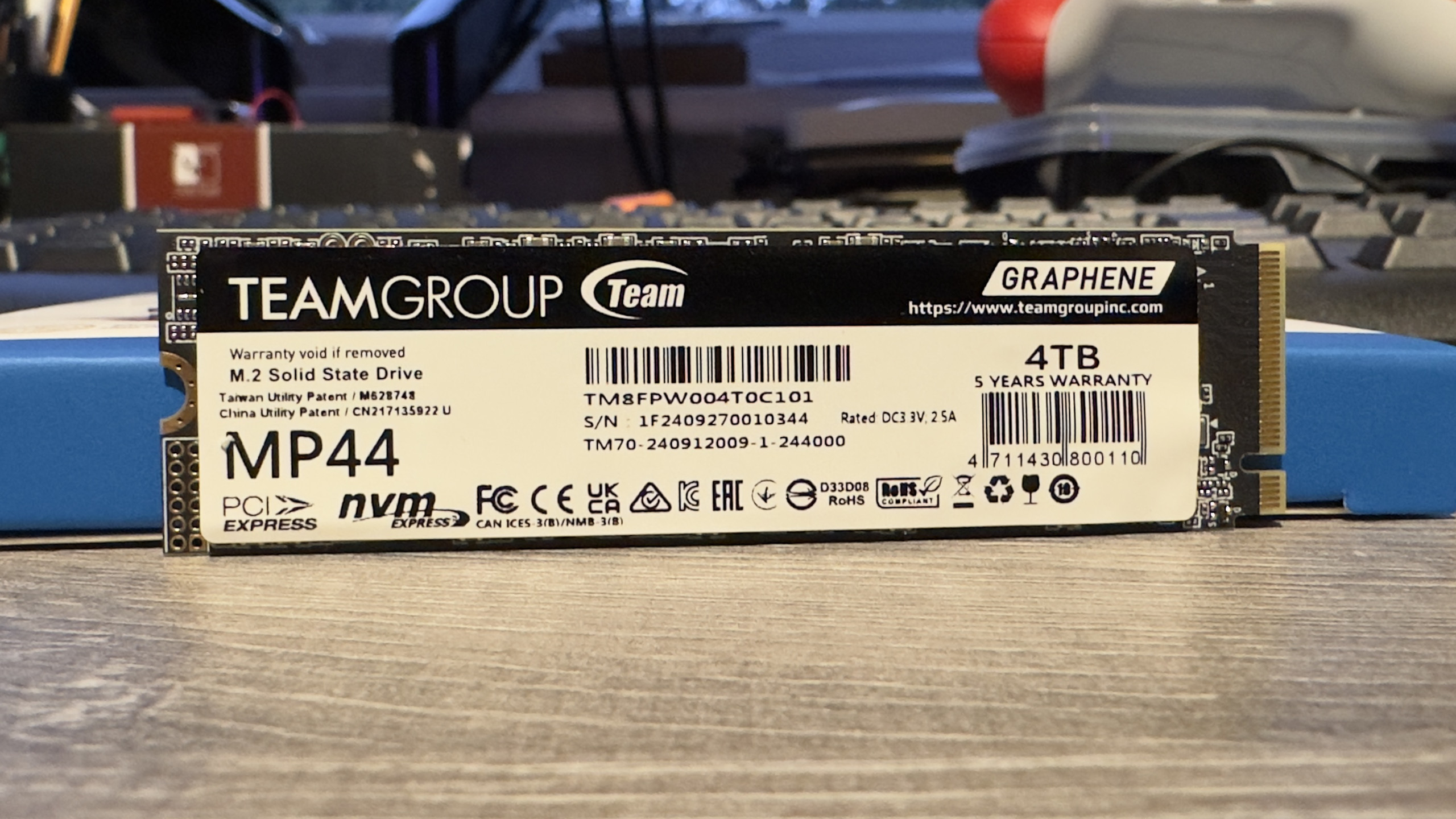
Capacity: 4 TB
Form factor: NVMe, 2280, M.2
Interface: PCIe 4.0 x4
Memory controller: MaxioTech MAP1602A
Flash memory: YMTC 232-layer TLC NAND
Rated performance: 7,400 MB/s sustained read, 6,900 MB/s sustained write
DRAM cache: None (dynamic SLC cache)
Endurance: 3,000 TBW
Warranty: Five years
Price: $225 | £268 | AU$585
These have less performance than SLC modules but they offer far more capacity. However, modern TLC chips can run some sections as if they're SLC, and the MP44 uses this high-speed section as a cache—buffering data transfers to ensure the drive keeps going at full speed for as long as possible.
Something else the MP44 doesn't have over some of the competition is a heatsink and with a maximum operating temperature of 70 °C, it's important that the drive is installed into a motherboard with a decent M.2 heatsink, as well as having good airflow inside.
That limit is 15 °C lower than that of the WD Black SN850X, the best gaming SSD around right now, which means the Team Group drive isn't ideal for situations where the SSD isn't going to be especially well-cooled (e.g. inside a console, laptop, or small form factor PC).
It does come with a graphene label covering all of the memory modules and controller but I found it rather easy to remove, which suggests it's perhaps not as effective at dissipating heat as one would believe, given the use of graphene.
Benchmarking SSDs is both simple and tricky. It's easy to throw one into a PC and run a series of tests to examine its performance in a variety of scenarios, but at the same time, the results one gets have the potential to be impacted by a number of factors.
For example, if you use a PCIe 4.0 M.2 slot on a motherboard that's managed by the chipset and not the CPU, then you're not likely to see the absolute full performance of the drive.
In reality, though, such differences rarely affect how well it works. You certainly won't notice your games loading considerably slower if you did use a chipset socket rather than a CPU one.
As you can see in the above results, the Team Group MP44 performs better than any of the other SSDs in the charts, although some of the test results are so similar that it's fairer to say that the MP44 is just as good as any other DRAM-less SSD.
Team Group does sell 4 TB SSDs with heatsinks but they're obviously more expensive than the MP44. If your gaming PC isn't best suited for a heatsink-less SSD, then you'd be better off choosing one of them.
CPU: AMD Ryzen 9 9900X
Cooler: Asus ROG Crosshair X670E Hero
RAM: 32 GB Corsair Vengeance DDR5-6000
GPU: GeForce RTX 4070
Storage: 2 TB Silicon Power XS70
PSU: MSI MAG AB50GL 850 W
OS: Windows 11 23H2
Chassis: Open platform
Monitor: Acer XB280HK
Performing a sustained and demanding sequence of data writes to the MP44 highlights the size of the pseudo-SLC cache. An average write speed of around 5,900 MB/s is maintained for around 196 seconds before dropping to 2,650 MB/S—which points to a maximum cache size of a little over 1 TB, and unless you're trying to write lots of huge 4K video files to the drive all the time, the MP44 will sustain that 5,900 figure comfortably.
That cache size is a lot larger than I was expecting. The WD Blue SN5000, for example, has a maximum SLC cache of 800 MB or so, and the Lexar NM790 which uses the same components, is smaller still at 600 MB. The MP44 doesn't perform quite as well as that drive in a sustained write but it's not far off, and I'd take the larger cache any day.
Do note that all dynamic SLC cache sizes depend on how much free space is available in the SSD—the fuller it gets, the lower the maximum size the cache can be.
During this test, the Team Group drive reached a reported peak temperature of 66 °C in an open-platform PC, with no active chassis cooling. That's a little close to the thermal limit for my liking but it's probably fine if one has a decent number of fans blowing air over it.

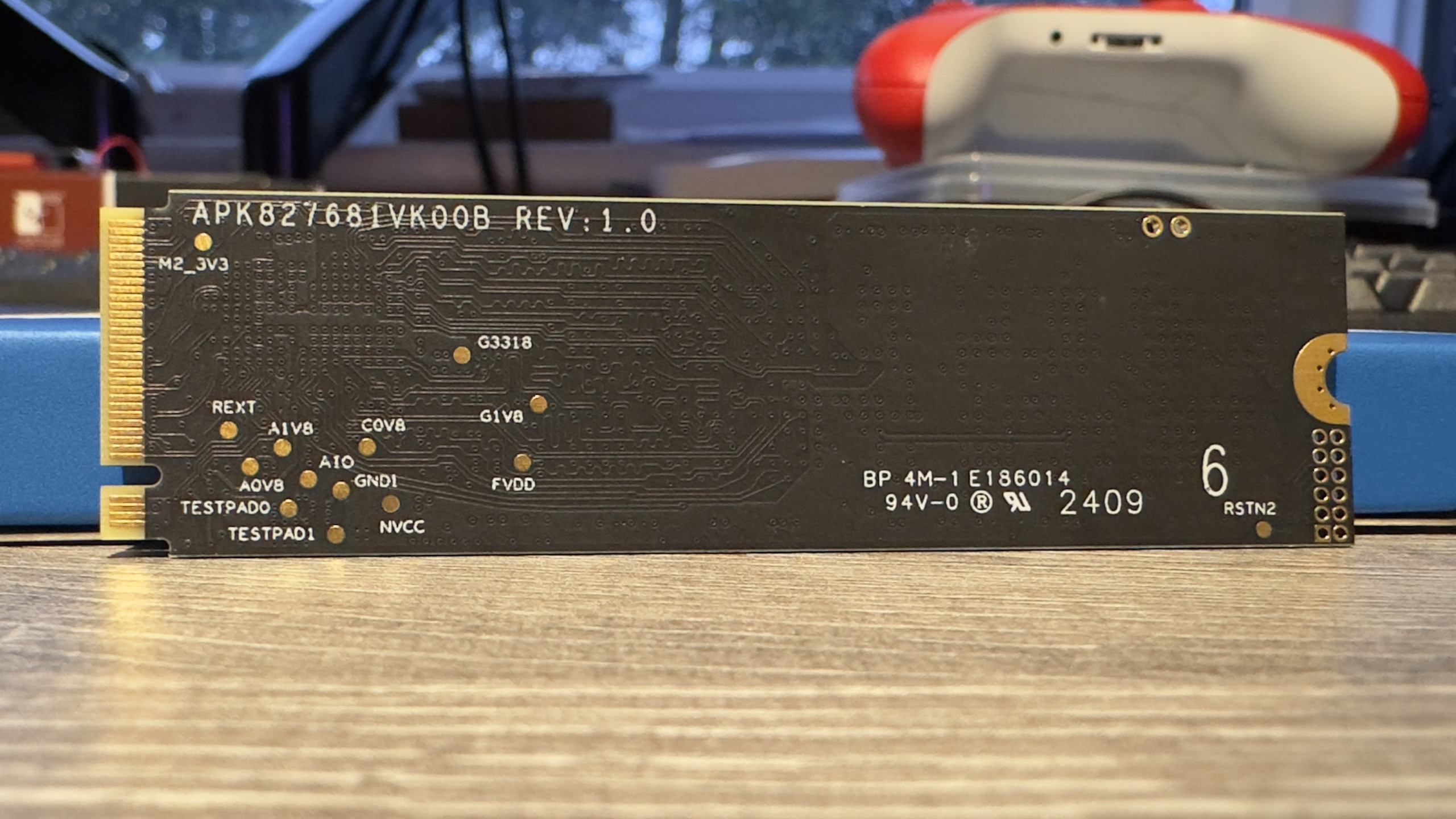
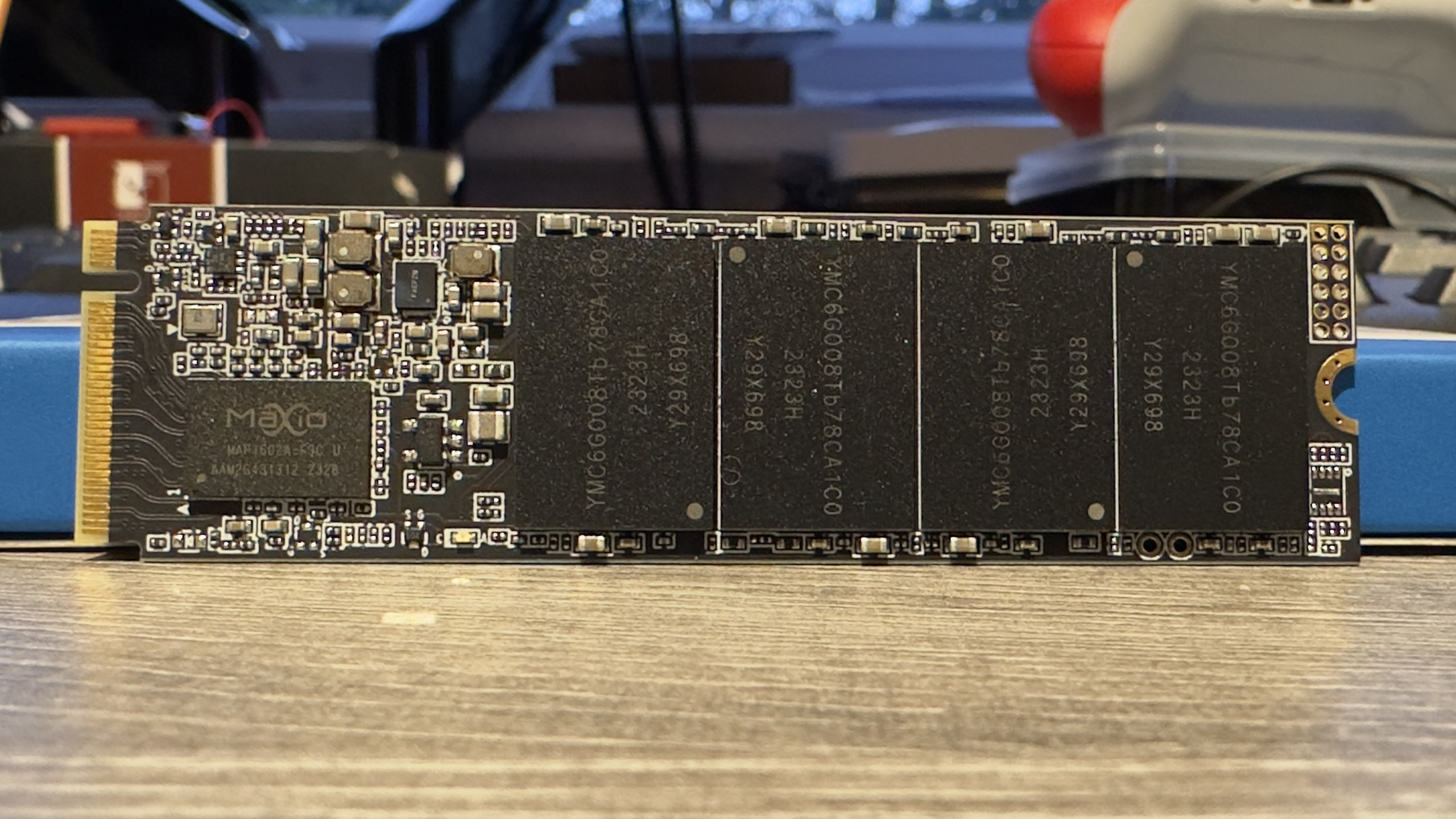
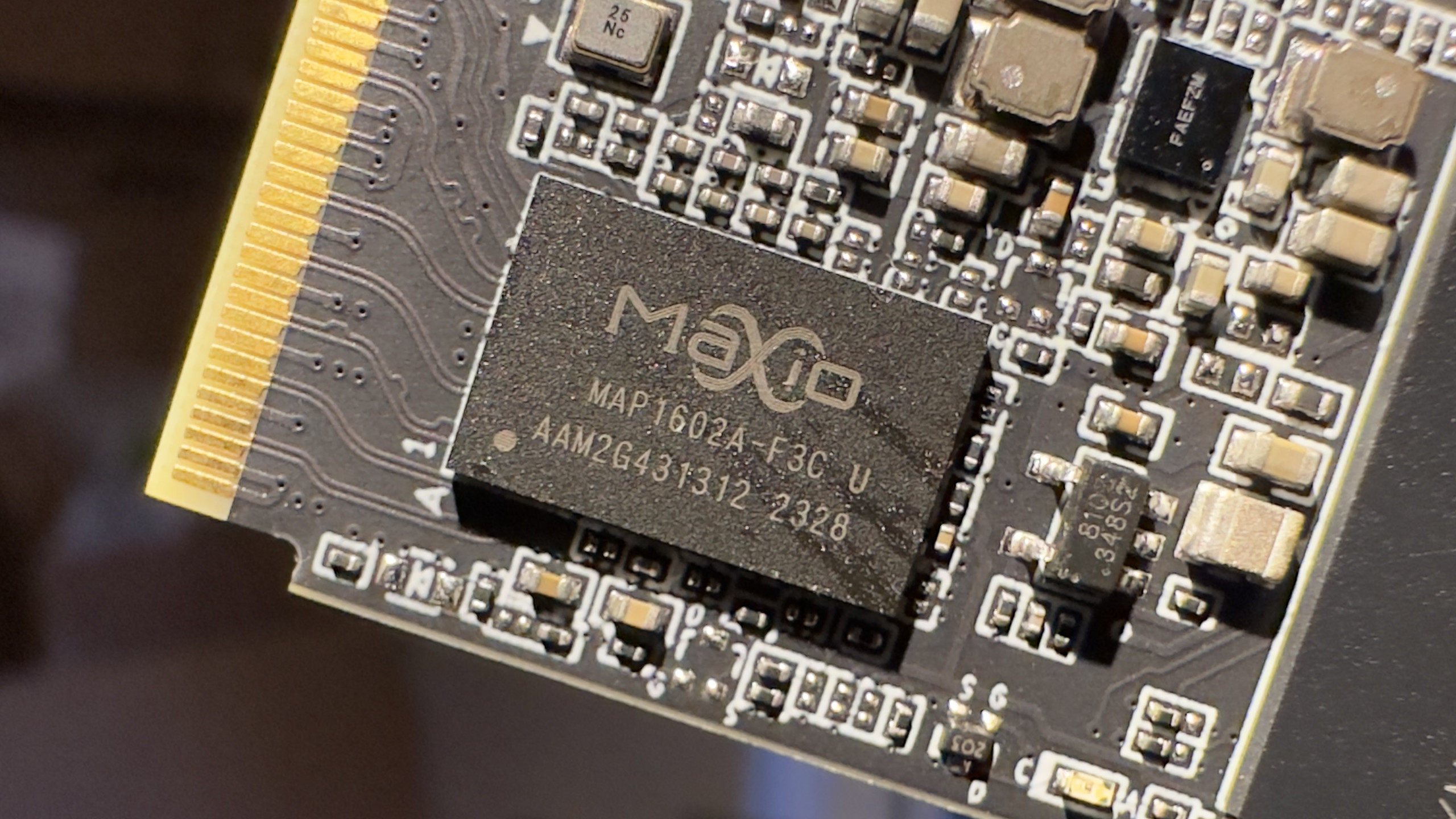
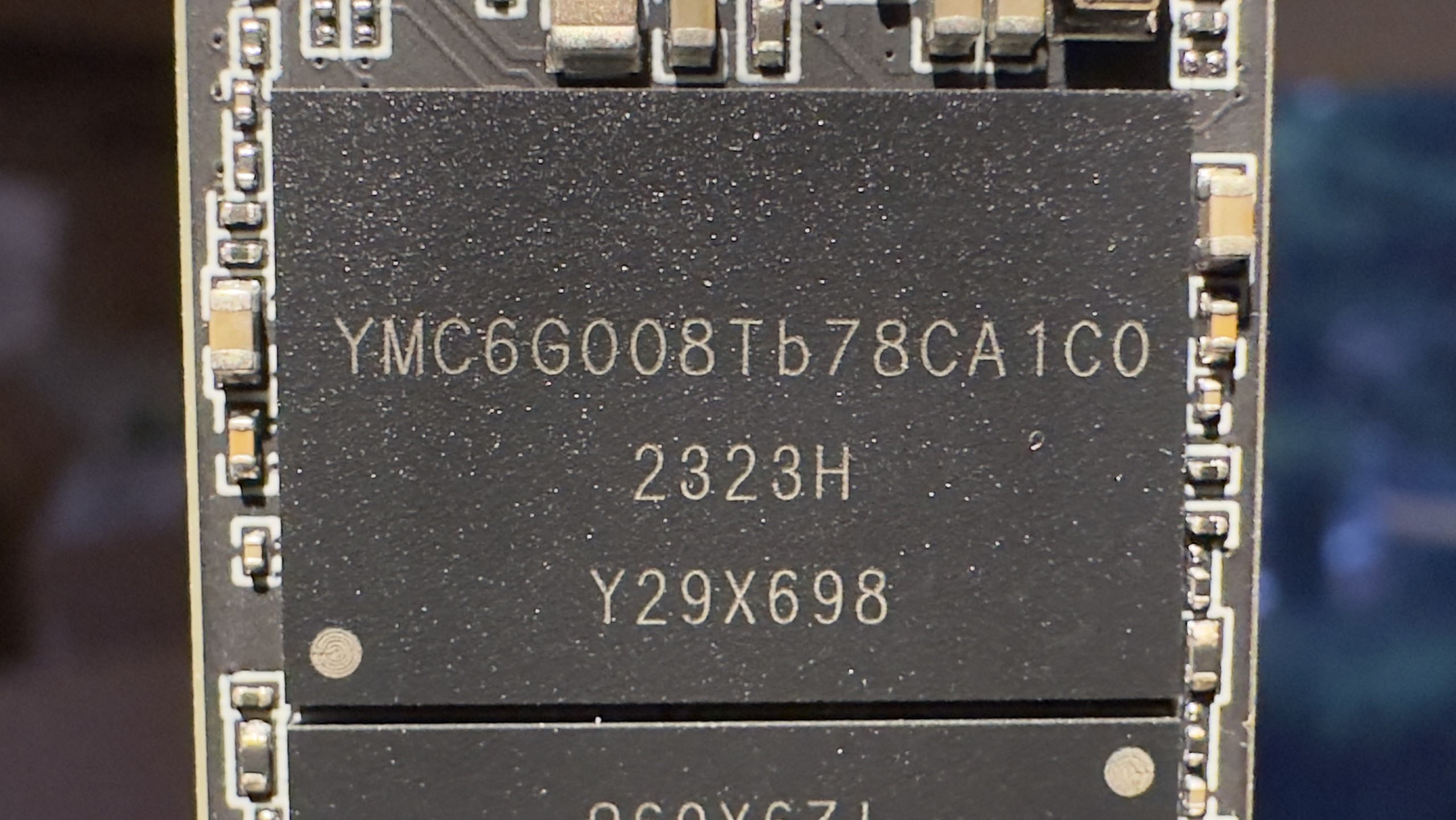
However, I have no concerns about the overall performance of the Team Group MP44. Even when the SLC cache is full, the write rate is more than acceptable. One note of interest, though, is that once the MP44 hits around 50% of its capacity, the write rate drops to an average of 980 MB/s, whereas the NM790 maintains a steady 2,700 MB/s.
That's possibly because of the controller limiting the rate to prevent the thermal limit from being reached but if you need to write 2 TB files on a regular basis, then a low-cost SSD like the MP44 probably shouldn't be your number one choice.
✅ You want an SSD with masses of space: 4 TB is as big as it gets right now, unless you want to spend an equally huge amount of money.
❌ Your PC doesn't have great cooling: The low thermal limit means you really need to ensure that the MP44 is covered by a good heatsink with lots of air flowing over it, if you want to avoid performance throttling.
With an endurance rating of 3,000 TBW, you could write 1 TB of data to the MP44 every day for a total of eight years before reaching that figure. You can certainly use the MP44 as a primary drive and not worry about its longevity, that's for sure.
There's an awful lot to like about the Team Group MP44. For its capacity, it's very good value for money—there are cheaper 4 TB drives available but they certainly don't have the same level of performance as this one—and it's perhaps all the SSD you'd ever need in your gaming PC. I personally prefer to have multiple drives, to separate apps, documents, games, and whatnot, but I appreciate that some people are perfectly happy to use just one big drive.
I do wish it had a higher thermal limit, though, and if I were fitting an MP44 in one of my rigs, I'd be looking to ensure there was a big fan blowing air across it at all times. That's tricky to achieve if it's mounted in the primary M.2 slot, as the graphics card will be belching out heat right next to it.
But as a secondary drive, inserted in a lower M.2 slot, I'd have no such qualms and this seems to be the ideal use scenario for the Team Group MP44. Sure it doesn't have DRAM—but when it's this good, who really needs it?
The Team Group MP44 is an excellent SSD, with bags of performance and capacity, in this 4 TB model. With a huge SLC cache, it can sustain data writes for a long time but it does need a decent cooling solution to stop it from thermally throttling.

Nick, gaming, and computers all first met in 1981, with the love affair starting on a Sinclair ZX81 in kit form and a book on ZX Basic. He ended up becoming a physics and IT teacher, but by the late 1990s decided it was time to cut his teeth writing for a long defunct UK tech site. He went on to do the same at Madonion, helping to write the help files for 3DMark and PCMark. After a short stint working at Beyond3D.com, Nick joined Futuremark (MadOnion rebranded) full-time, as editor-in-chief for its gaming and hardware section, YouGamers. After the site shutdown, he became an engineering and computing lecturer for many years, but missed the writing bug. Cue four years at TechSpot.com and over 100 long articles on anything and everything. He freely admits to being far too obsessed with GPUs and open world grindy RPGs, but who isn't these days?
